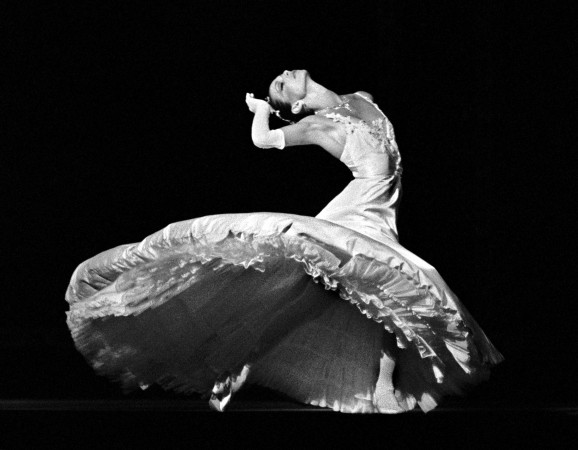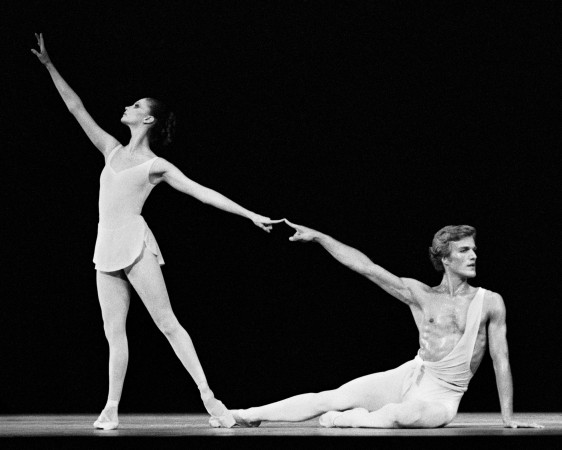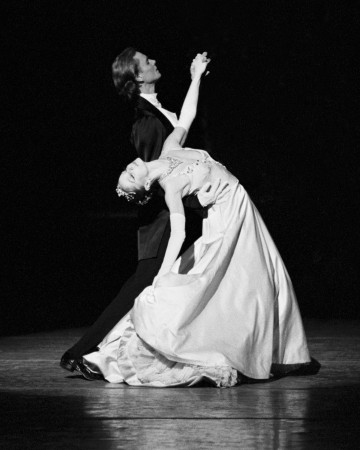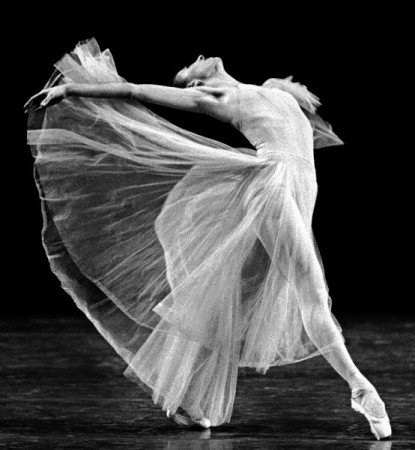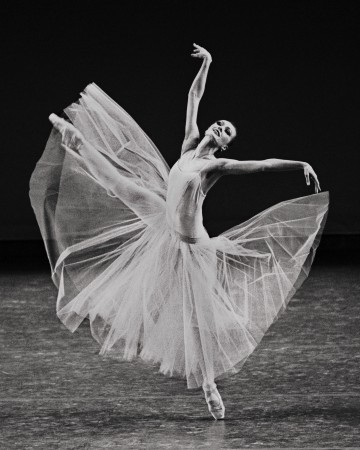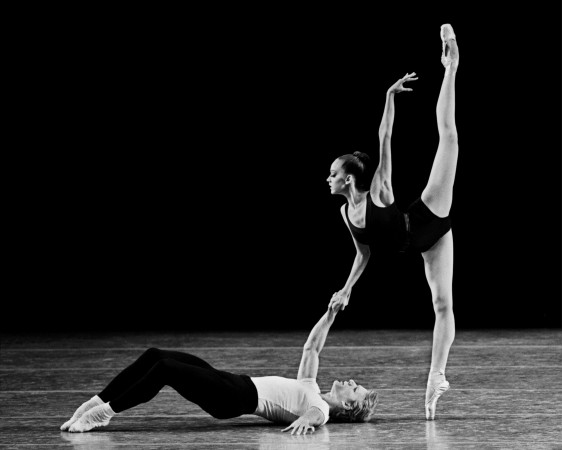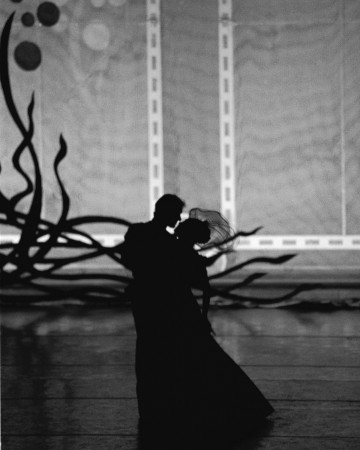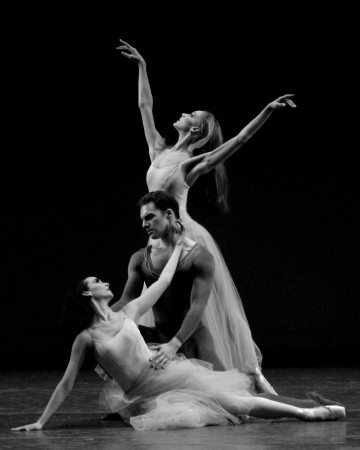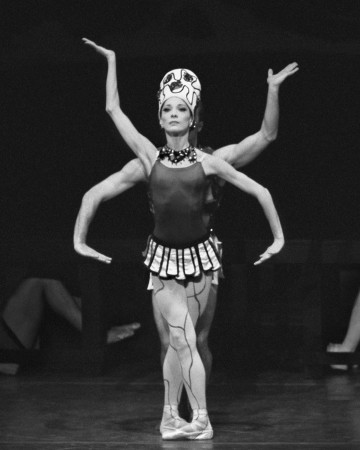January 22, 2004 Gallery “House Naschokina” together with the Bolshoi Theater, New York City Ballet and the agency Val G. Productions invites you to an evening dedicated to the 100th anniversary of the famous choreographer George Balanchine, and the opening of the photo exhibition ballets staged Balanchine at New York City Ballet.
George Balanchine is often referred to as one of the three geniuses of the XX century, along with Picasso and Stravinsky. He revolutionized ballet and forever changed the face of dance, not just in America but all over the world, where the leading theaters, the head of which often are his former students, performing ballets by Balanchine.
George Balanchine – an outstanding choreographer Russian-Georgian origin (real name George Balanchine). After graduating from the St. Petersburg Ballet School (now the Academy of Russian Ballet. Vaganova) Balanchine danced at the Mariinsky Theatre. Since 1925, he has done productions for Russian ballet troupe Diaghilev, which included the premiere of “Apollo” and Stravinsky’s “The Prodigal Son” by Prokofiev in Paris, which had a huge success.
After moving to America, Balanchine organized a school of American Ballet, and later became the founder of one of the best American classical ballet companies «New York City Ballet».
In his work, George Balanchine made and how the traditions of Russian classical ballet by Marius Petipa, Lev Ivanov and Mikhail Fokine, and at the same time to master and develop the various achievements of modern dance. More than a century ago by Petipa in Russia brought the French ballet style and transformed it into what we now call classical ballet. In the XX century the genius of George Balanchine took the overall atmosphere of openness in the culture of the United States and unceasing work for the rest of his life to once again transform the classical ballet and create American ballet. At that Balanchine was foreign bravura, and he deliberately avoided virtuosity typical of the style of Petipa. He deliberately destroyed a classic style, even when it recreated the tradition.
Balanchine liked to dance a geometric pattern, varying in motion, and with his stubborn insistence cultivated. He absorbed the rhythmic freedom of American jazz and could teach the dancer’s body to pass it. To this day, the school of Balanchine dancers and free to bend, and delay recovery, keep the hips in a natural position without straining them all the time, do a great stretch, get up in the position of “socks inside”, as well as to demonstrate the unexpected decision to move to may suddenly discover the meaning of the entire musical score. Lively style, created by Balanchine, laced with music and kinetic logic – a sense of connection between the individual “phrases” magical feeling of lack of exercise and literally an explosive movement, which occurs when there is what is called a complete fusion of music and dance. This man put ballet and dance performances at various venues.
Balanchine was always talking about his ballets as if they were a short-term, only for the “now” – he loved that word. He never built the altar for their work, and even the choreographer for the profession as a whole. It was his main criterion – interesting. He, in fact, quite seriously believed that the dance – it’s fun. He saw himself as the chief choreographer of entertainment. Most of all he hated all the boring … in music, in dance and in the movies, too. He was looking for an interesting taste in food, interesting scent in perfumes, interesting hairstyles for young women, interesting ways to bend the human body. He was an interested person, and that’s it. And just as was arranged troupe “New York City Ballet.” His ballets and his dancers had to generate interest, and he took care primarily about that. Balanchine proclaimed that does not think about the future of his ballets. He loved the phrase: “After me – the deluge.” (M.Baryshnikov)
Master left a great legacy. Among his productions of world famous ballet “A Midsummer Night’s Dream,” “Arlekiniada”, “Baroque Concert,” “Apollo,” “Orpheus”, “The Four Elements”, “Walpurgis Night”, “Viennese Waltz”, “Motsertiana” , “Waltz Fantasy” and many others.
American neo-classical tradition that began with Balanchine, now continues to grow, thanks to the many talented choreographers. Peter Martins, who Balanchine himself chose as his successor in the “New York City Ballet Citi” and that, perhaps, is the main guardian of neoclassicism, does not cease to fascinate us with new and new ballet productions, actuating the hidden potentials of the American style of ballet in general, and its rate in particular.
The exhibition features the work of American photographer Paul Kolnik, who for the past 30 years is the exclusive photographer New York City Ballet. The exhibition includes about 100 photos of the famous ballet choreographer. Among them – the wonderful portraits of George Balanchine, Mikhail Baryshnikov, as well as costumes and rare documentaries. In the halls of the gallery shows a documentary (nominated for “Oscar”) about the creative life of George Balanchine with Susan Farrell, his latest muse and video with excerpts from the plays of the great master (“The Nutcracker”, “Apollo”, “Scherzo a la Russe, “” Vienna Waltzes, “” Union Jack “,” Walpurgis Night “,” Dancing on the Square “).

